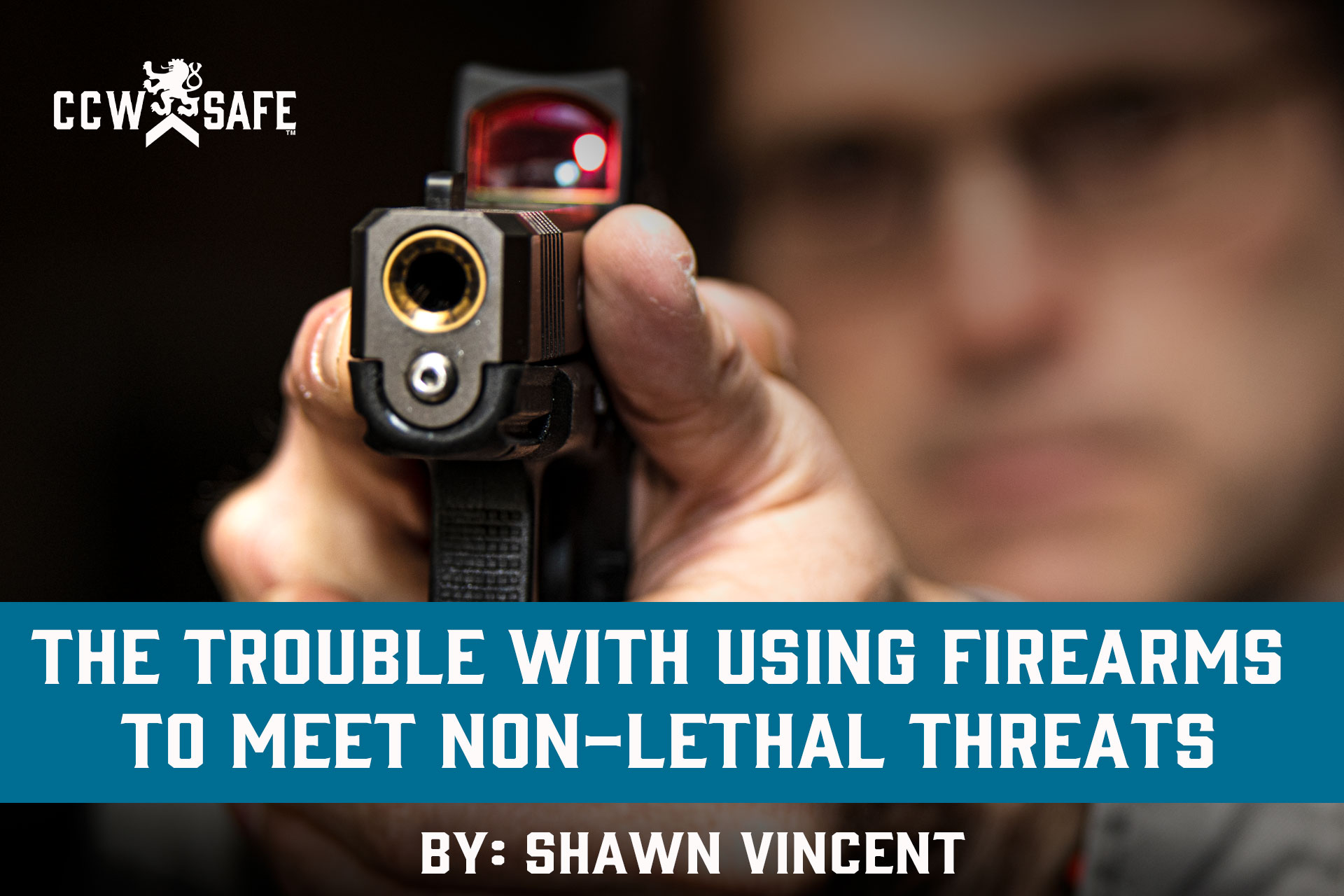
Posted on July 19, 2019
The Trouble With Using Firearms to Meet Non-lethal Threats
The Trouble With Using Firearms to Meet Non-lethal Threats
Sheri McClatchy had been a laundromat attendant at The Clothes Basket in Holly Springs, Mississippi for two years, and according to a WREG news report, she “never had any trouble at all. Never a cross word with anybody.” That changed in June of 2019 when, after McClatchy warned a customer against overloading the washers, another patron started yelling at her about the laundromat’s refund policy.
The verbal berating turned into a physical beating when the angry patron attacked McClatchy. Surveillance video captured most of the fight and shows the women grappling on the ground. The attendant manages to break free and she goes outside where a different camera shows her standing beside the opened front passenger door of her car. Presumably, she retrieves her pistol from the glove box.
When the angry patron approaches McClatchy outside, McClatchy, who has a cell phone to her ear, raises her pistol in a low ready position. When the attacker sees the weapon, she retreats, leaving the scene before law enforcement arrives.
In this case, McClatchy used her pistol without firing it, and successfully ended the confrontation. Don West, criminal defense attorney and National Trial Counsel for CCW Safe says, “If you believe you are in a situation where you can legally use lethal force in self-defense, and you are able to avoid actually doing it because the defensive display works, that’s obviously a better outcome.”
What’s interesting in the laundromat circumstance is that its’ not entirely apparent that McClatchy would have been justified had she fired her weapon. Although, just moments before, McClatchy’s attacker had wrestled her to the ground, the attendant’s injuries had been limited to a few scratches on her arms — hardly great bodily injury. Don West warns that the use of deadly force in a situation like this could be considered disproportionate, and that could scuttle a self-defense claim.
When lethal force is not justified, the display of a firearm can be considered “brandishing.” In many jurisdictions, brandishing a deadly weapon is tantamount assault, and it is punishable with jail time. However, some jurisdictions allow for the “defensive display of a firearm,” in which a reasonable person would understand that the display was meant to protect against harm. In our series “The Four Elements of Self-Defense,” we’ve often stated that there is a fine line between self-defense and murder in lethal use of force incidents. If that is true, then the line between defensive display and brandishing is even finer.
Regarding the McClatchy incident, Don West says, “This is a good example of where, had there been some other kind of non-lethal weapon available, some sort of intermediate option, she clearly had the right to do that.”
Not all self-defense situations are life-or-death situations. The problems with a firearm is that it is an all-or-nothing proposition, and it’s not ideal for addressing non-lethal threats. Of the nine cases we explored in “The Four Elements of Self-Defense,” most of the attackers or intruders that instigated the self-defense scenario were unarmed, and it was the disproportionate use of a firearm the triggered the controversy. In nearly all of those scenarios, had the shooter used some non-lethal force, it would have almost certainly been justified.
The lesson for concealed carriers is that using a firearm against an unarmed threat can create a lot of legal problems. Even if you don’t fire the weapon, your intended “defensive display” could be considered brandishing. If things go badly, and you do end up firing your weapon against an unarmed person, you’re inviting a very difficult legal battle. Carrying a non-lethal weapon such as pepper spray can give a concealed carrier extra options for dealing with non-lethal threats.
 |
SHAWN VINCENT- LITIGATION CONSULTANTShawn Vincent is a litigation consultant who helps select juries in self-defense cases, and he manages public interest of high-profile legal matters. If you have any questions for Shawn, or would like more articles like this, let us know belo |